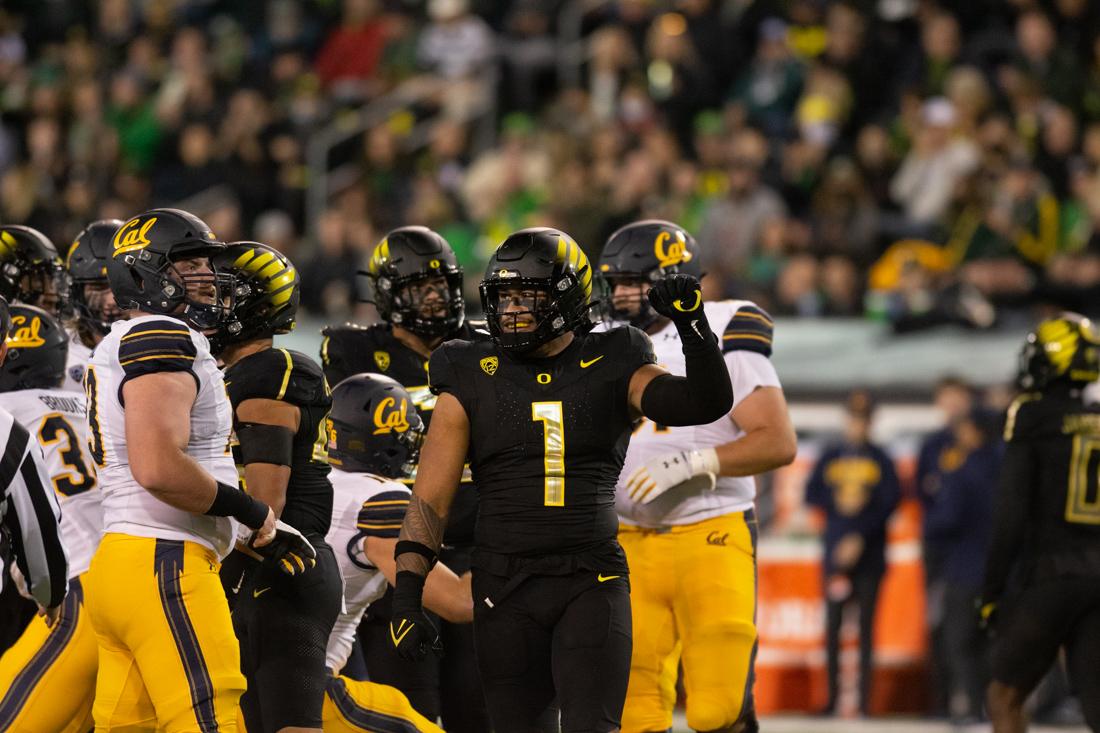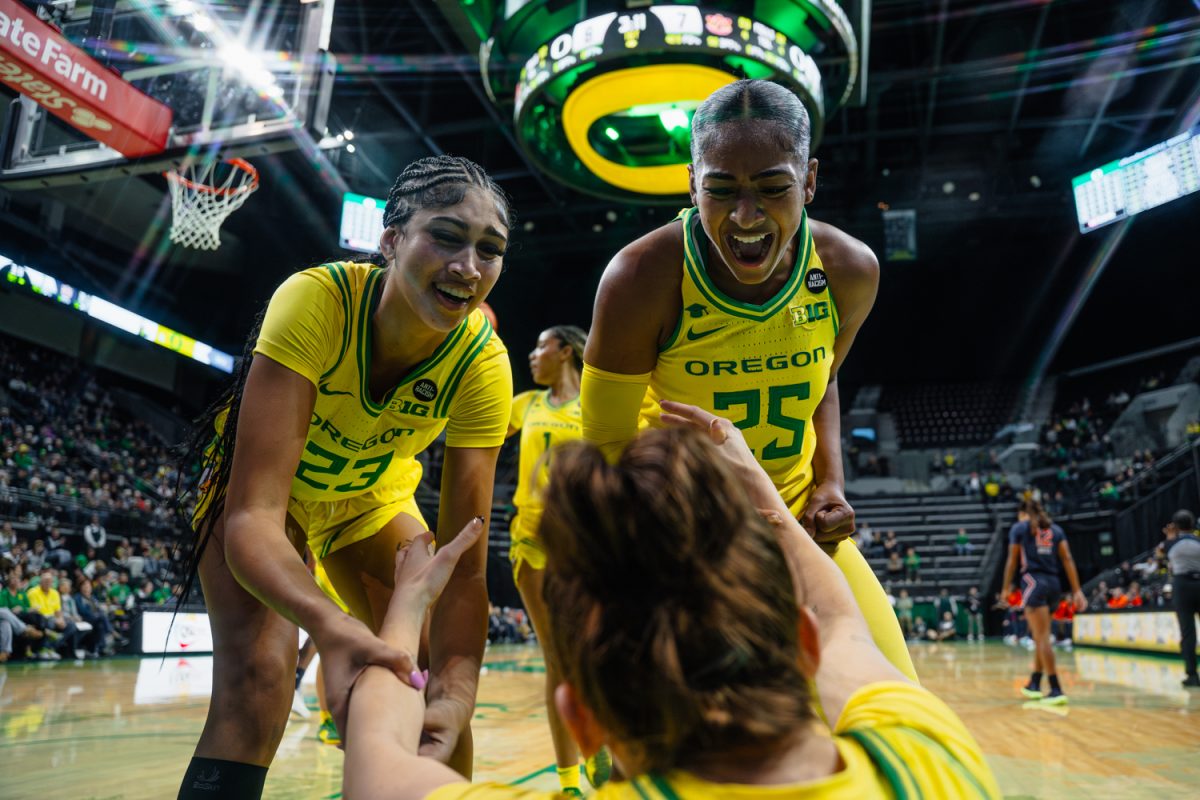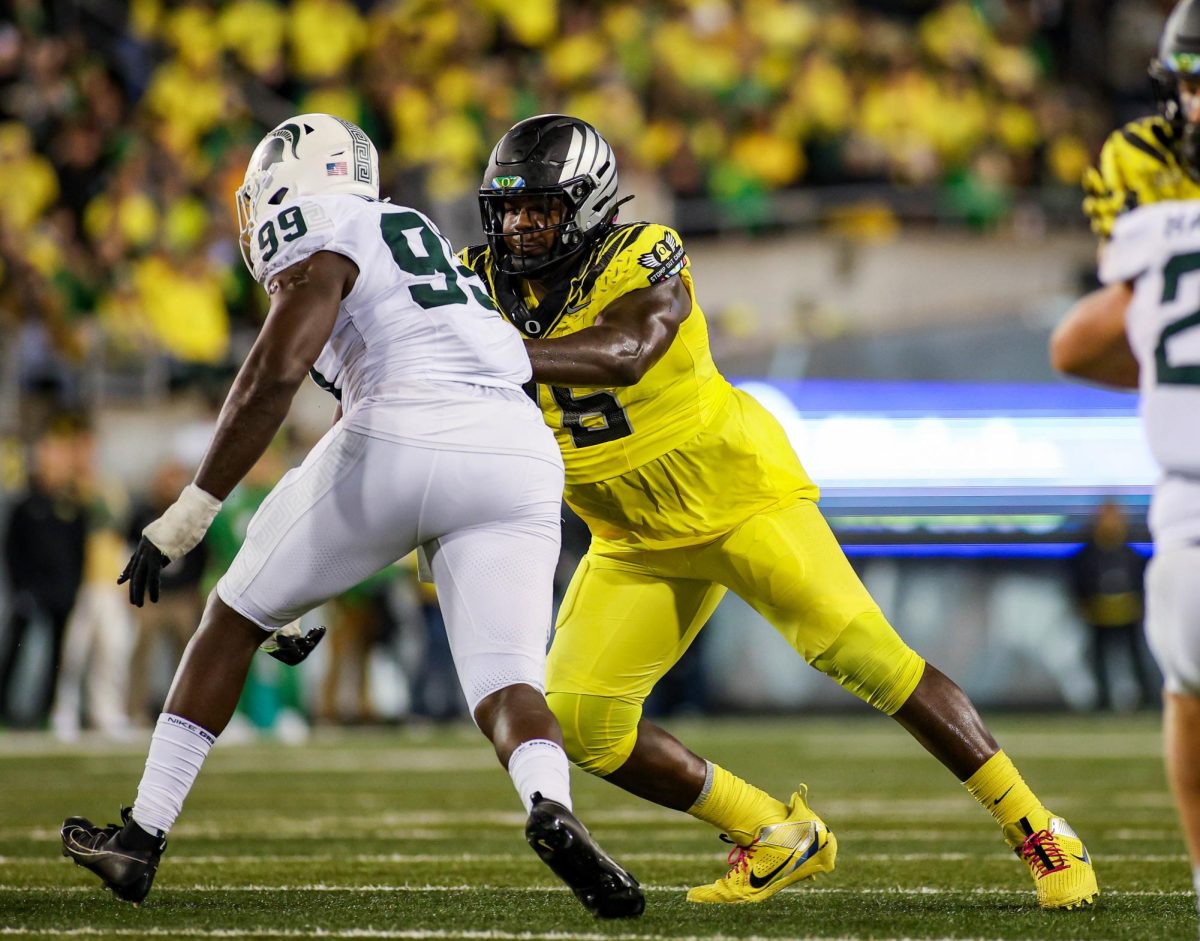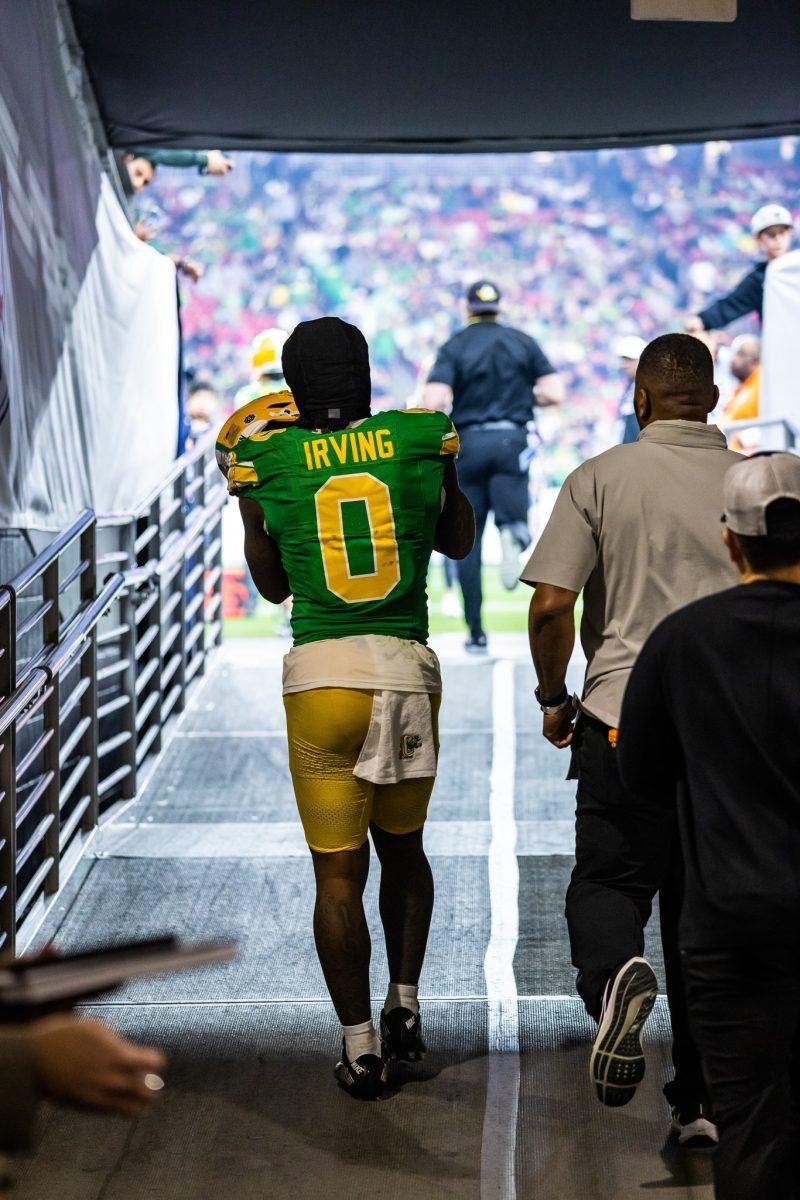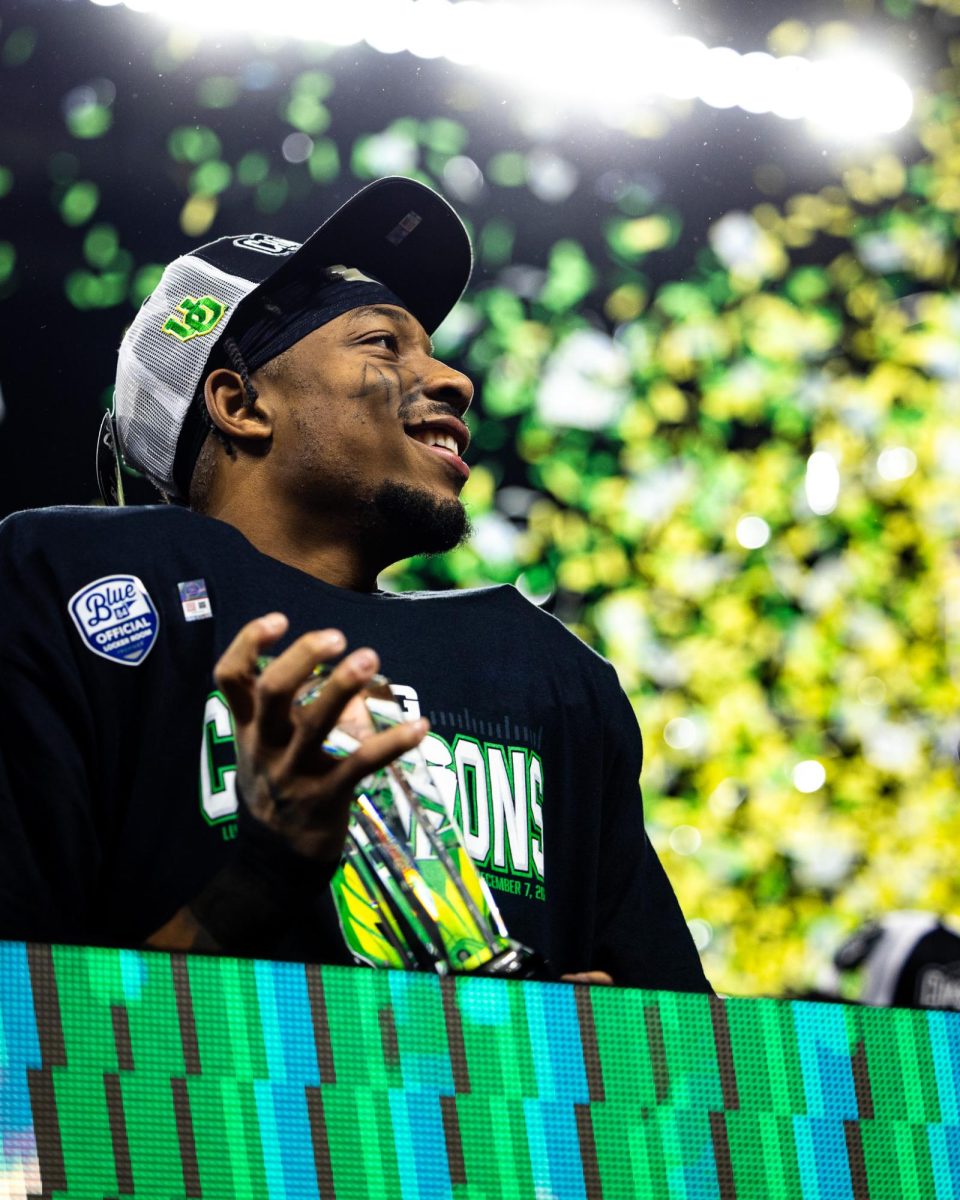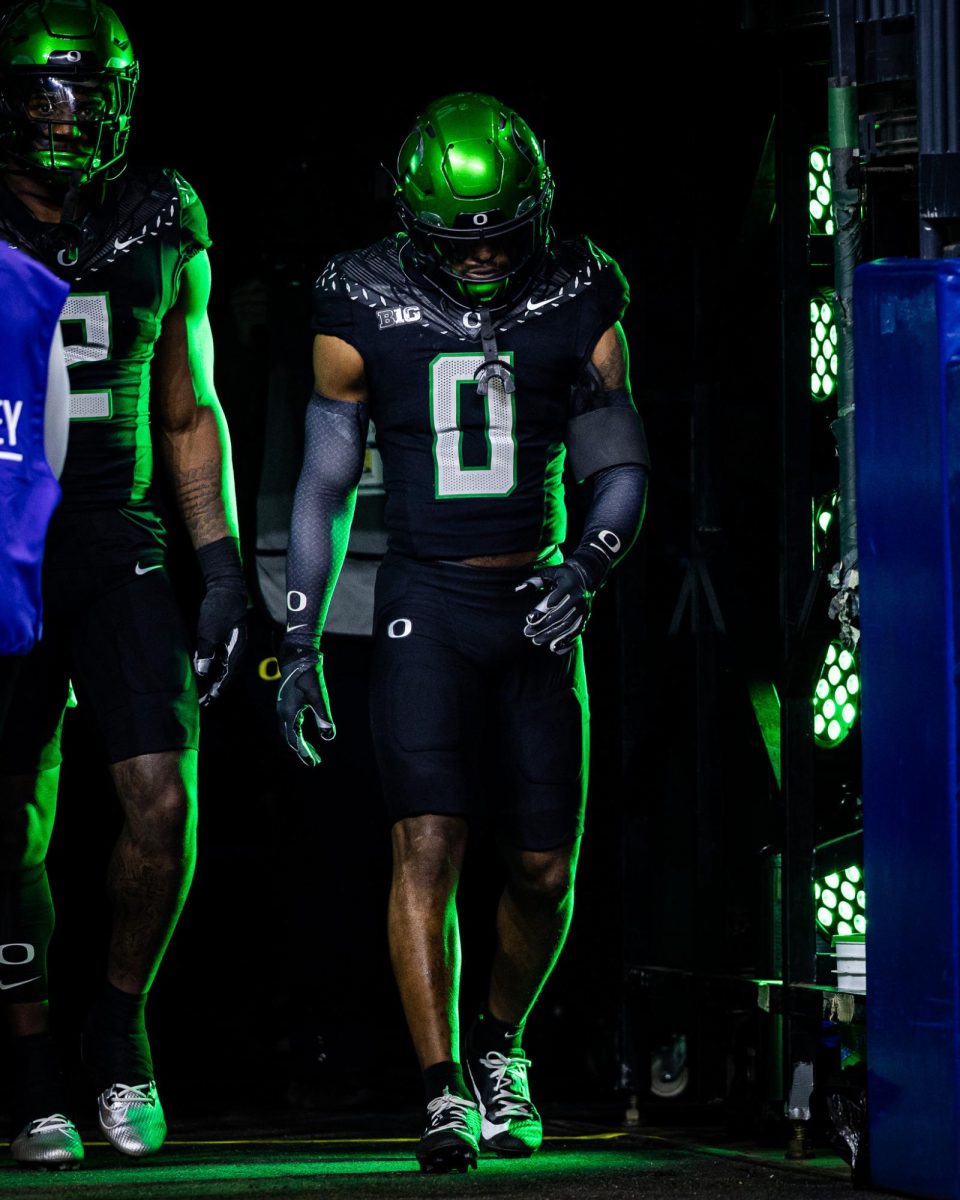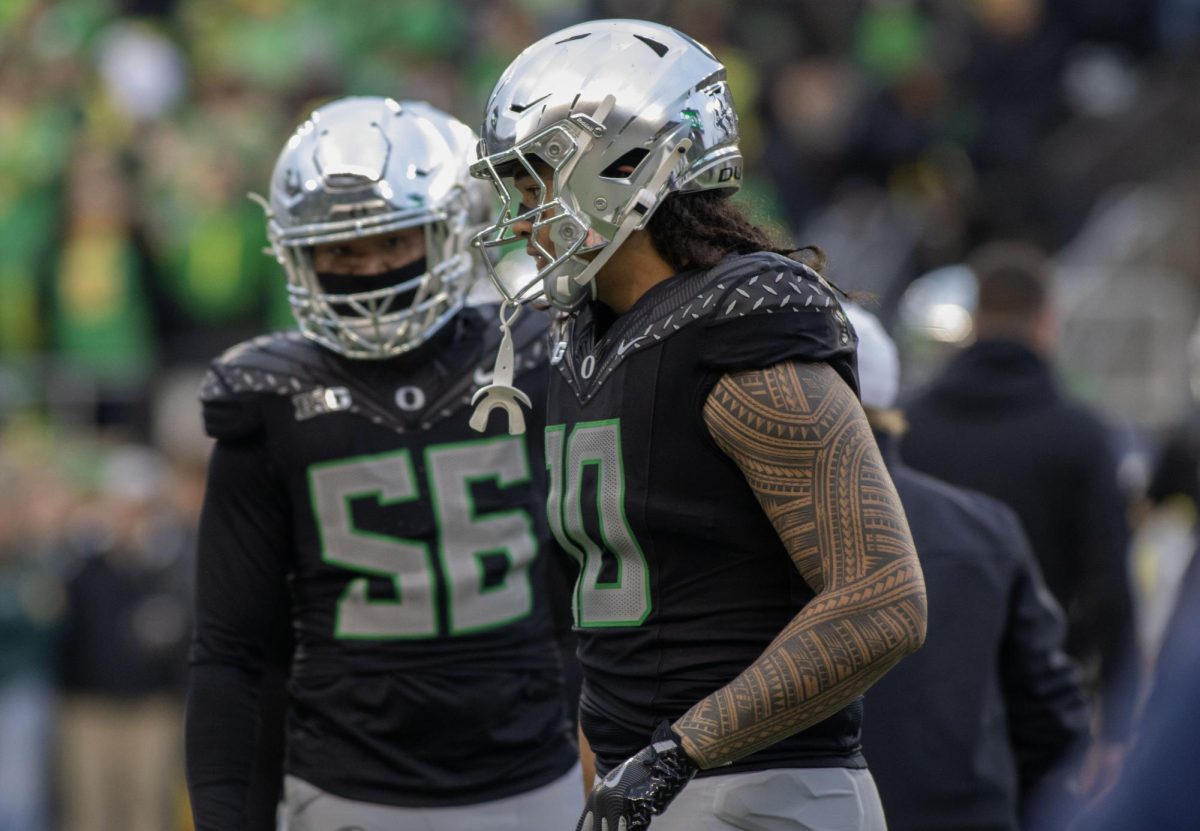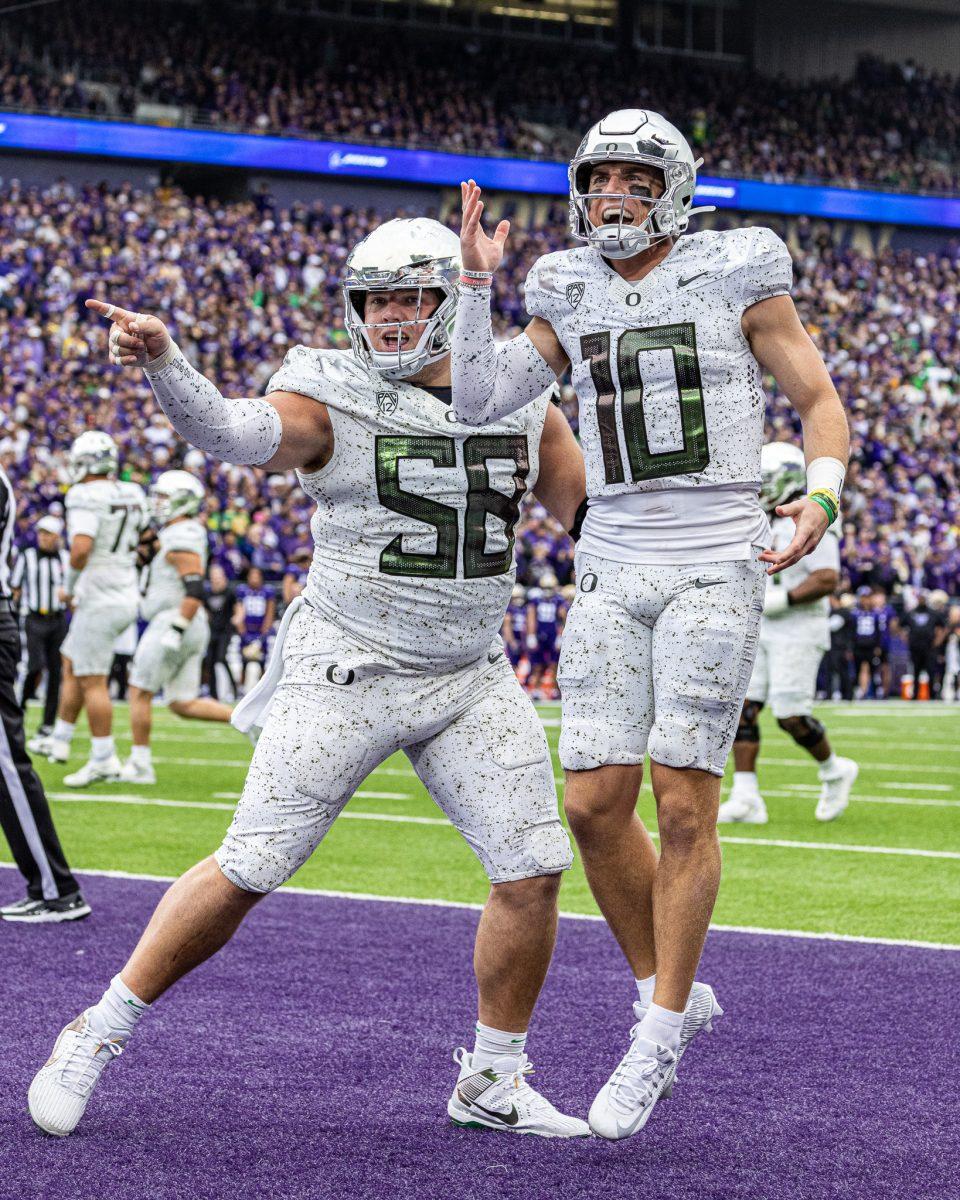First it was UCLA’s Demetric Felton, then Oregon State’s Jermar Jefferson and Iowa State’s Breece Hall. By the end of 2020’s abbreviated season, they made it all too clear that Oregon football had a glaring problem — its run defense.
In three of seven matchups in the shortened 2020 season, the Ducks allowed over 200 yards rushing.
Oregon finished 4-3 with a Fiesta Bowl loss to Iowa State, and its inability to get off the field in critical situations was a leading reason.
“I think our overall performance was just kind of flat,” former Duck and current Minnesota Viking defensive tackle Jordon Scott said following the 34-17 loss to Iowa State, where they allowed 228 total yards on the ground.
He added: “I just think that next season and this offseason for Oregon — I know those guys will be working hard and next season they’ll come out improved.”
Scott was right.
This year, the Ducks (6-1, 3-1 Pac-12) have made significant improvements against the run, and last week’s 34-31 road victory at UCLA serves as ample proof.
The Ducks, despite their 10th overall ranking, entered the Rose Bowl last Saturday a narrow underdog, due in major part to the UCLA running game — an explosive, complex system that few teams around the Pac-12 have had an answer to.
Leading up to Saturday’s matchup with the Ducks, UCLA running back Zach Charbonnet averaged 6.4 yards per attempt, rushed for seven touchdowns and reached over 100 yards in five of the Bruins’ seven matchups.
But the Oregon defense — a fierce conglomerate of brute strength, speed and athleticism — stalled Charbonnet, limiting him to 35 yards on 15 rushing attempts and cutting his average yards per play to 2.3.
Bruins quarterback Dorian Thompson-Robinson, who also poses a legitimate running threat, was held to 35 rushing yards and was sacked four times on Saturday.
“Sky is the limit for these guys, this team and this defense,” Oregon head coach Mario Cristobal said after the Ducks’ victory at UCLA. “Those guys just rose to the occasion. They knew they were going to have to strike blockers, get off blocks and make plays. And our guys did it again, again and again.”
It was Kayvon Thibodeaux’s first full game in action, and he made his presence felt. The future NFL first-rounder had nine tackles, including four and a half for a loss, as well as two sacks and a forced fumble against the Bruins.
“He’s a monster,” Ducks safety Verone McKinley III said. “Like I’ve said before, you have to account for him at all costs, no matter where he’s at. Leaving him one on one, it’s very hard to win your one on one against him.”
He was unguardable and helped apply an exhausting pressure on Thompson-Robinson that rendered a UCLA offense unable to protect its early two-score lead.
“He changed the game, and I think what’s evident is he has worked himself — he hasn’t inherited — into being the most impactful defensive player in college football,” Cristobal said.
It wasn’t the Ducks’ first time standing tall against the run, and it likely won’t be the last. Battered as it is, the Oregon defense has thrived in stopping the run. Missing linebackers Justin Flowe and Mase Funa, as well as facing stints without Thibodeaux, the defensive front has, for the most part, remained stout.
Through seven weeks, the Oregon defense has recorded 42 total tackles for loss and 16 sacks. It also ranks second in the Pac-12 in yards per attempt, limiting its opponents to 3.4 per carry.
Even in games where they’ve allowed higher-than-normal total rushing yardage, the Ducks have been opportunistic, making a difference in the game in key situations and moments.
In the week six bout with the Cal Bears, the Ducks allowed 155 yards on the ground — their second-highest allowed rushing tally of the season. But, in the red zone, the story was different. The Oregon defense held Cal without a rushing touchdown all night, most notably in the game’s final moments where the Ducks avoided overtime and solidified the win with several stops on the goal line.
The No. 7 Ducks are favorites in each of their remaining matchups, but it won’t be easy.
They’ll face huge tests against Oregon State and Utah, who rank first and fifth in the conference respectively, in average rushing yards per game. If the Ducks are to win out and find themselves in the playoff picture come December, emphasis needs to be placed on the defense’s ability to address complex running schemes and make teams pay with its physicality.


